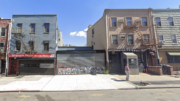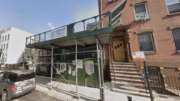After generations of disinvestment and a loss of experience, New York City’s capacity to build new subways has greatly diminished. Demand for New York City living is on the rise, but, at least in the outer boroughs, there isn’t any new rail capacity to facilitate densification. There hasn’t been an outer borough subway extension in 25 years, not since 3.2 miles were tunneled to give the Queens Boulevard Line another way into Manhattan (via the new F service on 63rd Street), and there are no plans to build more.
Instead, the city and MTA are focusing on a simpler mode of transit: buses. The MTA and city’s Department of Transportation have worked together to launch six Select Bus Service routes, as they call their implementation of what’s known generally as bus rapid transit. These buses are faster than locals and limited, with their wide stop spacing, dedicated lanes and pre-boarding fare payment, cutting down the time it takes before the bus can get moving again.
Now Mayor Bill de Blasio, taking more ownership of the city’s bus system than mayors traditionally do, has pledged to expand the network to 20 lines, building what he called a “world-class” system of rapid buses. Some have likened SBS to a “subway on the street,” but in New York, there’s one crucial way in which they differ: nobody seems to expect any new density along bus routes, which even with dedicated lanes and faster boarding, don’t have the capacity of true rail rapid transit. So far, the Department of City Planning has not rezoned any neighborhoods in response to improved SBS routes, and they don’t seem to have sparked any new development.
DOT head Polly Trottenberg, though, raised the question during MTA’s “reinvention commission” meetings. She suggested using value capture to fund SBS improvements to Q52/53 bus route, running north-south along Woodhaven and Cross Bay Boulevards, through central Queens down to the Rockaways. At $200 million, or about ten times the cost of other SBS jobs, the Woodhaven and Cross Bay Boulevard would be more elaborate than past SBS implementations, probably with physically separated lanes or other roadway changes. In value capture schemes, property taxes are diverted or additional ones levied to pay for capital enhancements.
She later hedged on value capture, saying she didn’t want to get ahead of herself. And in reality, value capture from improved buses is probably a bit fanciful given that the city has never even upzoned in coordination with a set of SBS upgrades.
Still, the question remains: can SBS investments drive new development in the neighborhoods they touch?
For New York’s wealthier residents and would-be residents, a lack of new housing supply means higher rents or moving to the suburbs. But poorer immigrants on limited budgets still tend to value the walkability, transit access, and ethnic community that only a city can provide, so a pinched housing stock can lead to desperate overcrowding in urban neighborhoods. Immigrants of South Asian descent in particular are flooding into Woodhaven and Ozone Park, squeezing into large single-family homes, carving up an artificially limited number of housing units into smaller, often illegal subdivisions.
In the neighborhoods along Woodhaven and Cross Bay Boulevard in southern Queens, encouraging development on any appreciable scale would mean rezoning side streets, and not just the major thoroughfares, to allow small apartments buildings or two- and three-family attached townhouses, where single-family detached and semi-detached homes now sit.
In Ozone Park and Woodhaven, property values and demand are in the sweet spot where they’re high enough to support new construction, but not so high that only luxury housing pencils out. New development in these parts of Queens is naturally affordable to middle-class families.
Large portions of the neighborhoods flanking the Woodhaven corridor were rezoned during the Bloomberg administration, primarily to prevent redevelopment and protect their single-family detached character. Any upzoning would most likely stir the passions of car-dependent old-timers, pitting those hostile to new development against immigrants from South Asia and Guyana, who are crowded into the meager early 20th century building stock and could desperately use room to grow.
The city hasn’t discussed its plans for new routes beyond the Woodhaven Boulevard project. But to the extent SBS is planned for wide boulevards with room for relatively high capacity dedicated lanes, the city may look for opportunities to zone for mid-rise apartments. The more frequent and the faster the bus service, the more density can be accommodated.
The Pratt Center for Community Development has been among the city’s most vocal advocates for an expanded Select Bus Service system. A report released in December of last year casts some doubt on the ability of rapid buses to support more development. “Experience in other cities shows that BRT is unlikely to trigger land speculation and displacement,” the authors contend. “But when BRT is implemented as part of a coordinated revitalization strategy, it can support targeted development of affordable housing and retail.”
At the same time, in a city in which there are no plans for rail expansions, and enhanced bus service is the only transit improvement being discussed for the outer boroughs, the city must find ways to link these investments with development opportunities. If New York can build a subway line to 34th Street and 11th Avenue, adding capacity and extending the network in the outer outer boroughs should be a top priority, as these are the neighborhoods where trains are most needed, and where low-density zones could actually yield to high-density affordable and market-rate housing.
Talk about this topic on the YIMBY Forums
For any questions, comments, or feedback, email [email protected]
Subscribe to YIMBY’s daily e-mail
Follow YIMBYgram for real-time photo updates
Like YIMBY on Facebook
Follow YIMBY’s Twitter for the latest in YIMBYnews





